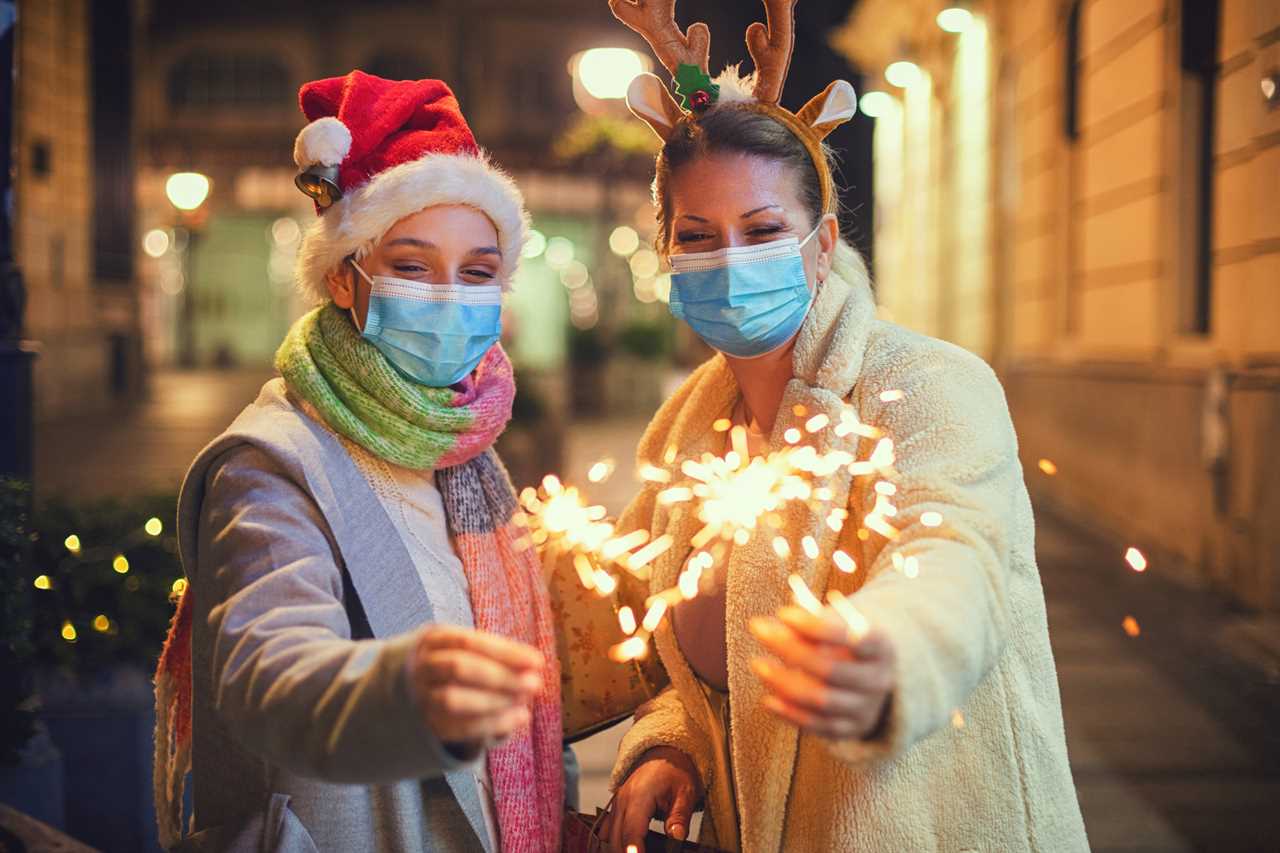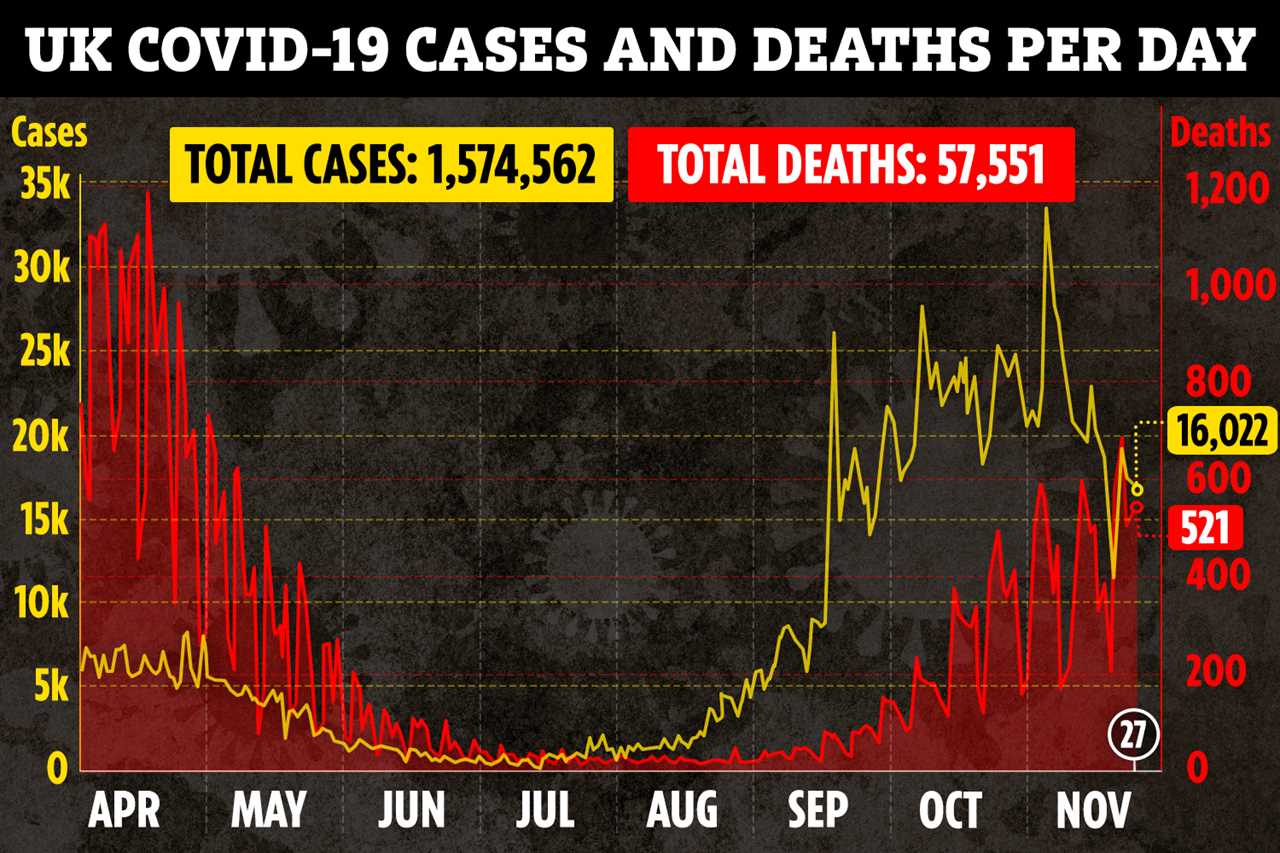A SURGE in cases of the coronavirus after the Christmas period could mimic the crisis in September, scientists warned.
The return of students to university saw infection rates soar, triggering the second wave of the pandemic.

Cases first rose in young adults, before spilling into the older, more vulnerable age groups and causing a widespread outbreak.
And Christmas threatens to cause more chaos as family and friends come together to celebrate, scientists fear.
The prevalence of the virus could ‘easily double’ due to just a few days of festivities, they warned.
It means by the New Year, the UK could be in a terrifying position.
The bleak forecasts were laid bare in scientific reports handed to the Scientific Advisory Group for Emergencies (SAGE), which then presents the findings to the Government to help guide the response to the pandemic.
The documents were written and discussed in mid-November, but only published by the Government today.
But nevertheless, officials have steered clear of cancelling Christmas.
Three households will be allowed to join together for five days between December 23 and 27, following a period of tiered restrictions.

HERE WE GO AGAIN
The Scientific Pandemic Influenza Group on Modelling (SPI-M-O), a sub-group of SAGE, wrote in its paper: “It is highly likely that an increase in prevalence will occur during the festive period if contact patterns change and increase, which will inevitably lead to a rise in hospital admissions and deaths.
“If pre-Christmas prevalence is high and a lot of indoor mixing takes place, the increase in prevalence could be very large indeed.
“A parallel can be drawn, albeit on a different scale, between the return of students in Autumn and people from different households mixing intensively over Christmas.”
The second wave of Covid-19, initially fuelled by the re-opening of schools and universities, is still crippling the UK.
Cases begun rising rapidly from mid-September and through October.
They have only just begun slowing over November, after the national lockdown was imposed.
But the SPI-M-O suggests improvements in trends will not only reverse over Christmas, but jump up to levels never seen before.
NEW YEAR FEARS
The fall-out of a knees up this Christmas won’t become clear until several days after Christmas and into January.
If someone caught the virus on December 25, typically they would show symptoms around five days later, on December 30.
It means potentially millions of contagious people could be further spreading the virus by New Years Eve, on December 31.
England will return to the tiered system after Christmas. But undoubtedly, friends will want to unite for an evening to enter 2021, even if in an outdoor beer garden until the 11pm curfew.
A document prepared by the Celebrations and Observances Task and Finish Group said: “People infected during Christmas festivities will be near peak-infectiousness at New Year.
And the SPI-M-O wrote: “To permit greater social contact over Christmas while minimising the likelihood of the NHS being overwhelmed in the New Year would need prevalence to be driven as low as possible before Christmas.
“The lower prevalence is pre-Christmas, the safer that period
will be.”
HOW BAD WILL IT BE?
The group said it was not possible to estimate the sheer impact of Christmas because its hard to model how each person will behave.
However, in another paper, it said a ‘doubling’ in prevalence was a threat.
The scientists wrote: “Substantial mixing of people over a short period of time, especially those who do not make contact regularly during a month represents a significant risk for wide-spread transmission.
“SARS-Cov-19 has demonstrated high secondary attack rates in households (with estimates of up to 50% in one household becoming infected from one infected member).
“The prevalence could easily double during a few days of festive season, with further multiplicative increases as new infections go back to their ‘routine’ networks.”
Around 633,000 people, or one in 85, currently have the coronavirus, according to estimations from the Office for National Statistics.
It is not clear how the last week of the lockdown followed by a month of restrictions under the tiered system will impact this number.
Scientists hope cases will drop before Christmas day so that the relaxation in rules will not be too drastic.
However, they recognised in a number of official documents today that the festive month brings with it high levels of socialising.
The SPI-M-O said: “People should understand that there is risk in visiting their older loved ones, those risks can be decreased by minimising other contacts in the week preceding a visit.
“Socialising before seeing older relatives is more risky than doing so afterwards.”
“REAL THREAT”
Scientists reporting to SAGE said the respiratory infections tend to spread more around Christmas time and other school holidays.
Therefore, it is not a ‘theoretical risk’ that the coronavirus will do the same, they said.
The elderly tend to take on this burden, raising fears for the dire consequences of a “normal” Christmas, joining grandparents with younger adults.
Did you miss our previous article...
https://trendinginthenews.com/covid-19/who-is-dr-mike-aka-mikhail-varshavski-and-does-he-have-a-girlfriend






